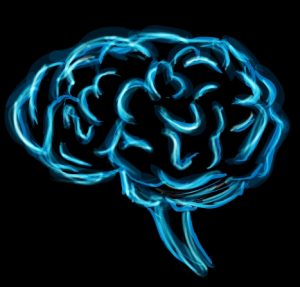Behavioural and Psychological Symptoms of Dementia (BPSD) is a catch-all phrase referring to one of many behaviours that patients with dementia exhibit, leading to difficulties in maintaining their care. Agitation, wandering, and violence being amongst the most common, different agents have been used over time in order to attempt to control these. Liperoti’s review in 2008 still covers many of the salient features – that up to 90% of Alzheimer’s patient exhibit BPSD, with one third having severe behaviours.
Typical antipsychotic agents were initially commonly used for treatment of these behaviours, and the exact mechanisms have been controversial, with some proponents feeling that modulation of neurotransmitter mechanisms disrupted by the dementing process leading to the benefit, but others stating that this is merely related to sedation. The atypical agents, with their lower rates of EPSEs, rapidly became popular. However from 2002, concerns started to rise with risperidone being found to be associated with more intracerebral haemorrhages.
Since then, research has found that all antipsychotics are associated with higher all-cause mortalities, with a significantly higher risk associated with conventional neuroleptics. The increased risk of cerebrovascular incidents has been estimated at between 2.5 to 3 times baseline risk, which is a considerable concern for the older patient. Black box warnings by the FDA and the TGA have been issued, and found in the US to be associated with a reduction in prescribing. The number of serious incidents attributable to the antipsychotics – cerebrovascular incidents, falls, and cardiac abnormalities – has made their role much more marginalised.
However, the role of mood stabilisers has been minimally discussed, although the presumption that they would regulate behaviour similar to how antipsychotics could operate without as much sedation or falls risk has been difficult to validate. A 2012 review by Yeh found scant available high quality research supporting any mood stabiliser. Valproate has been surprisingly associated with a similar level of all-cause mortality compared with antipsychotic agents, and case series on lithium have shown it ineffective. There are only open trials or case series for gabapentin, topiramate, and lamotrigine, with modest findings.
The situation is remarkably different, however, for carbamazepine, which has had at least one meta-analysis and three RCTs supporting its use in global BPSDs, including agitation and aggression. A 51-patient study which monitored dementia patients being withdrawn from carbamazepine identified a return to baseline levels of behavioural difficulties, reversed after being restarted.
Carbamazepine, however, is a notoriously difficult agent to use in the elderly, with problematic issues with hepatic dysfunction and the risk of Stevens-Johnson Syndrome (a form of toxic epidermal necrolysis that has the distinction of being one of the few life-threatening dermatological conditions), as well as blood dyscrasias and p450 autoinduction leading to numerous drug interactions. In the author’s experience this can be reasonably accounted for by a very slow titration, starting at 50mg nocte and increasing after a week to 50mg bd, with FBC, LFT and carbamazepine levels checked fortnightly and doses increased by not more than 100mg per week. Neutropenia and progressive hepatic dyfunction are significant early findings that warrant cessation of the drug, and even after reaching therapeutic levels (which approximate seizure control levels), levels need to be rechecked a month later, and then every 3 months due to p450 autoinduction potentially leading to improved clearance of the drug.
It is the finding of several studies that, particularly those patients with prominent frontal lobe related behavioural difficulties, a significant benefit can be attained from carefully initiated and monitored carbamazepine, without the cerebrovascular risk and less of the falls risks of antipsychotic agents. This is a worthwhile issue to consider, for those patients who are no longer in a position to be responsible for their behaviours, or to defend themselves against well-meaning doctors.
References:
Liperoti R, Pedone C, Corsonello A. Antipsychotics for the Treatment of Behavioral and Psychological Symptoms of Dementia (BPSD). Current Neuropharmacology. 2008;6(2):117-124.
Yeh YC1, Ouyang WC. Mood stabilizers for the treatment of behavioral and psychological symptoms of dementia: an update review. Kaohsiung J Med Sci. 2012 Apr;28(4):185-93
Tariot P er al, Withdrawal from Controlled Carbamazepine Therapy Followed by Further Carbamazepine Treatment in Patients with Dementia. J Clin Psychiatry 60:10, October 1999
Published in mindcafe

